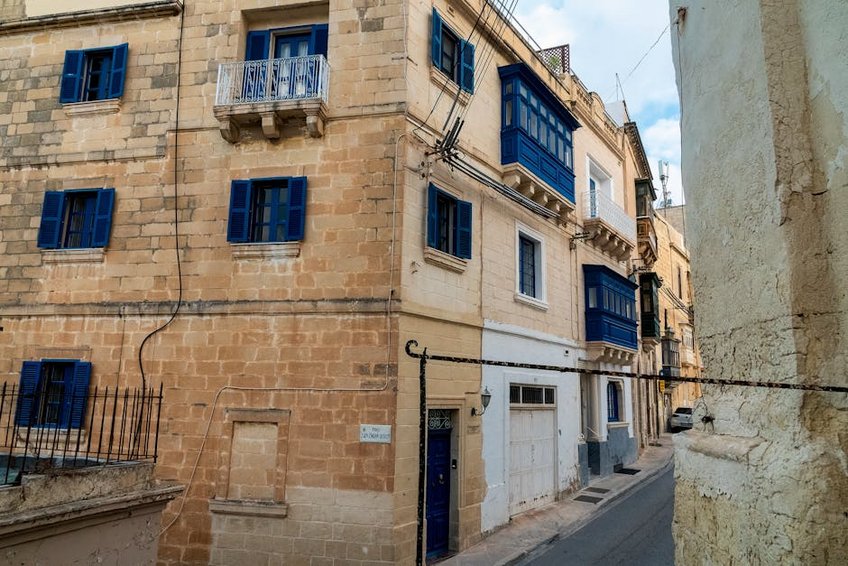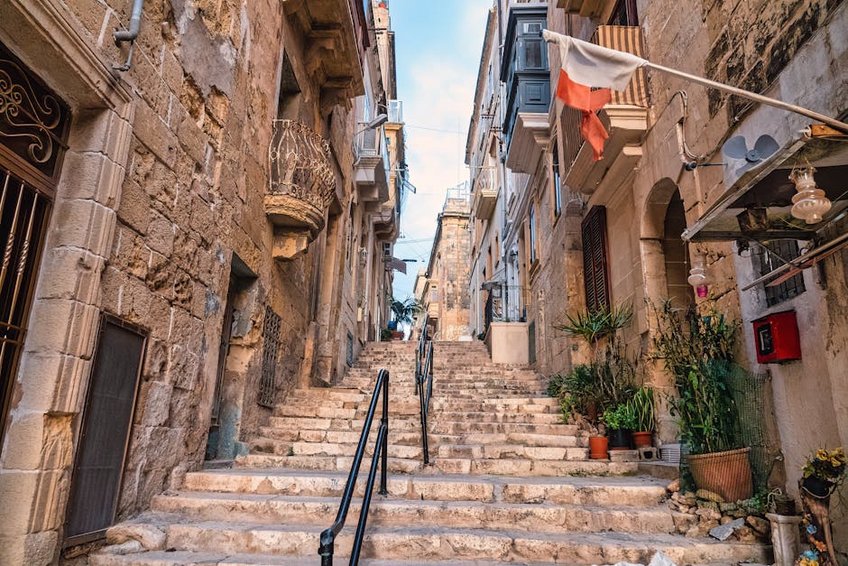Malta Mdina Old Town: The Ultimate Travel Guide to the Silent City
Stepping into Malta Mdina Old Town feels like entering a living museum where time stands still. This ancient fortified city, perched on a hilltop in central Malta, offers one of Europe’s most perfectly preserved medieval experiences. As you walk through its narrow, winding streets, you’ll discover centuries of history etched into every golden limestone building. The Malta Mdina Old Town experience combines breathtaking architecture, fascinating legends, and panoramic views that stretch across the entire island. Many visitors describe their first glimpse of Mdina’s imposing bastions as genuinely magical, especially during the golden hour when the setting sun sets the entire city ablaze in warm, honey-colored light. Whether you’re a history enthusiast, architecture lover, or simply seeking authentic cultural experiences, this remarkable destination deserves a prominent place on your Malta itinerary.
Malta Mdina Old Town Essential Information – Historical Background and Significance
Malta Mdina Old Town represents over 4,000 years of continuous habitation, making it one of Europe’s oldest fortified settlements. The Phoenicians first fortified this strategic hilltop around 700 BC, followed by Roman, Arab, Norman, and Knightly periods that each left their distinctive architectural and cultural marks. The name “Mdina” derives from the Arabic word “medina,” meaning “walled city,” while its nickname “Città Notabile” (The Noble City) reflects its historical status as the home of Malta’s aristocratic families. What makes Malta Mdina Old Town particularly fascinating is how perfectly it preserves its medieval character despite its long history. The entire city covers approximately 0.9 square kilometers (0.35 square miles) and stands about 200 meters (656 feet) above sea level, offering spectacular views of the surrounding countryside and distant Mediterranean Sea.
Historical Timeline – What You Need to Know
- Phoenician Period (700 BC): First fortifications established, known as Maleth
- Roman Era (218 BC): Renamed Melite, became administrative center with extensive Roman villas
- Arab Period (870 AD): Walls reduced to current size, urban layout established
- Medieval Era (1530): Knights of St. John make Birgu their capital, Mdina remains aristocratic seat
- 1693 Earthquake: Significant damage leads to Baroque reconstruction under Lorenzo Gafà
- Modern Times: Carefully preserved as cultural heritage site with limited modern development
- Budget travelers can enjoy Mdina’s free attractions including walking the walls, exploring streets, and visiting churches with €15-20 daily budget for simple meals and public transportation
- Mid-range visitors should budget €50-70 daily for guided tours, museum entries, restaurant meals, and taxi transfers from Valletta or nearby areas
- Luxury experiences including private guides, fine dining at Michelin-recommended restaurants, and luxury accommodations nearby range from €150-300+ per day
- Malta Tourism Authority – Official Mdina Guide
- Heritage Malta – Mdina Historical Information
Architectural Significance – Key Details
The architecture of Malta Mdina Old Town represents a unique blend of medieval, Baroque, and Norman influences that create its distinctive character. The city’s defensive walls, originally built by the Arabs and strengthened by the Knights, stand as impressive examples of military architecture. Within these walls, you’ll discover magnificent palaces featuring ornate balconies, intricate door knockers, and beautiful courtyards that speak to Mdina’s aristocratic heritage. The Baroque style dominates many buildings due to reconstruction following the 1693 earthquake, with the magnificent Mdina Cathedral standing as the crowning achievement of this architectural period. What makes the urban landscape particularly charming is the consistent use of local golden limestone, which glows magically during sunrise and sunset.

Malta Mdina Old Town Planning Your Trip – Practical Preparation Guide
Planning your visit to Malta Mdina Old Town requires some strategic thinking to maximize your experience while navigating its unique characteristics. The city’s nickname “The Silent City” comes from its peaceful atmosphere and restrictions on vehicle access, which means you’ll primarily explore on foot. Most visitors spend between half a day and a full day exploring Mdina, though history enthusiasts might want to allocate additional time for museums and detailed exploration. The compact size makes it perfect for walking, but the limestone streets can be slippery and uneven, so comfortable footwear is essential. Since Malta enjoys over 300 sunny days annually, sun protection becomes crucial, especially during summer months when temperatures frequently exceed 30°C (86°F). Fortunately, the narrow streets provide natural shade, and numerous cafes offer refreshing breaks throughout your exploration.
Best Time to Visit Malta Mdina Old Town
The ideal time to visit Malta Mdina Old Town depends largely on your weather preferences and crowd tolerance. Spring (April-June) offers perfect conditions with temperatures around 20-25°C (68-77°F), blooming flowers, and manageable crowds. Autumn (September-November) provides similar advantages with warm Mediterranean waters still suitable for swimming after your Mdina exploration. Summer months (July-August) bring intense heat that can make extensive walking uncomfortable, though early mornings and evenings remain pleasant. Winter (December-March) sees fewer tourists and lower accommodation prices, with temperatures rarely dropping below 10°C (50°F). For photography enthusiasts, the golden hour before sunset creates magical lighting conditions against the golden limestone, while night visits offer a truly atmospheric experience with illuminated monuments and peaceful lanes.
Budget Planning and Costs for Malta Mdina Old Town
Essential Preparation Checklist
Preparing for your Malta Mdina Old Town visit involves both practical and cultural considerations. Comfortable walking shoes with good grip are absolutely essential due to the ancient, often slippery limestone paving. Sun protection including hat, sunglasses, and sunscreen becomes crucial during summer months, though the narrow streets provide welcome shade. Carry a refillable water bottle since Malta’s tap water is safe to drink and public fountains are available. For photography enthusiasts, wide-angle lenses capture the narrow streets effectively while telephoto lenses help with details on buildings and distant views from the bastions. If visiting churches or religious sites, modest clothing that covers shoulders and knees shows respect for local customs. Lastly, downloading offline maps or guidebooks helps navigation since the maze-like layout can be confusing for first-time visitors.
Malta Mdina Old Town Top Attractions and Activities – Must-See Experiences
Exploring Malta Mdina Old Town reveals countless historical treasures and cultural experiences within its compact area. The main entrance through Mdina Gate immediately transports you back centuries with its impressive fortifications and ornate design featured in Game of Thrones. From here, your journey through history continues along Villegaignon Street, the main thoroughfare lined with aristocratic palaces, quaint shops, and hidden courtyards. Don’t miss the opportunity to climb the bastion walls for breathtaking panoramic views across Malta’s countryside to the Mediterranean Sea—particularly spectacular at sunset. The combination of well-preserved architecture, fascinating museums, and authentic local experiences makes every corner of Mdina worth exploring. Allow yourself to get pleasantly lost in the labyrinthine side streets where you’ll discover hidden gardens, traditional Maltese balconies, and quiet spaces that feel untouched by time.
Must-See Highlights in Malta Mdina Old Town
Your Malta Mdina Old Town itinerary should prioritize several unmissable attractions that define the city’s character. St. Paul’s Cathedral stands as the architectural centerpiece, featuring a magnificent Baroque facade, intricate marble floors, and artwork by Mattia Preti. The adjacent Cathedral Museum houses an impressive collection of religious art, including Albrecht Dürer woodcuts. The Mdina Dungeons provide a fascinating, if somewhat macabre, look at medieval punishment methods and historical events. For palace architecture, Palazzo Falson Historic House Museum offers a beautifully preserved medieval palace with collections of art, furniture, and silverware. The Carmelite Priory showcases monastic life with its beautiful church and peaceful cloisters. Finally, no visit is complete without walking the fortifications, particularly the bastions near Fontanella Tea Garden which offer the best panoramic views across the island.
Hidden Gems and Local Favorites
Beyond the main attractions, Malta Mdina Old Town conceals numerous hidden gems that reward curious explorers. The Knights of Malta exhibition provides an engaging multimedia journey through Maltese history that’s both educational and entertaining. Look for the mysterious Roman sarcophagus embedded in the wall near the Cathedral Museum—a fascinating example of architectural reuse. For authentic experiences, visit the Mdina Glass showroom where you can watch master glassblowers create beautiful pieces using traditional techniques. The tiny Chapel of St. Agatha, tucked away in a quiet corner, features beautiful frescoes and a peaceful atmosphere. Local residents particularly recommend visiting during the evening when day-trippers have left and the illuminated city takes on a magical, almost mystical quality. For unique souvenirs, seek out the small shops selling handmade lace, traditional Maltese silver, and locally produced wine and olive oil.
Malta Mdina Old Town Practical Travel Information – Transportation and Accommodation
Navigating Malta Mdina Old Town requires understanding its unique accessibility situation and transportation options. The city itself is car-free for non-residents, with parking available just outside the main gate in a large public lot that costs approximately €2-3 per hour. Most visitors arrive by bus from Valletta (routes 50, 51, 52, 53) which takes about 25-30 minutes and costs €2-3 each way in summer, €1.50-2 in winter. Taxis from Valletta cost approximately €15-20, while ride-sharing services like Bolt and Uber offer competitive pricing. Once inside Mdina, everything is easily accessible on foot, though the uneven limestone streets can challenge those with mobility issues. For accommodation, you cannot stay within Mdina itself as it’s primarily residential, but numerous excellent options exist in nearby Rabat, just a 5-minute walk from Mdina’s gates, offering convenient access while providing more amenities and dining options.
| Accommodation Type | Location and Features | Price Range (USD) |
|---|---|---|
| Budget Guesthouses | Rabat area, basic amenities, shared facilities | $50-80 per night |
| Mid-Range Hotels | Within walking distance, breakfast included, modern comforts | $100-180 per night |
| Luxury Boutique | Converted palaces, historical features, premium services | $250-400+ per night |
| Self-Catering Apartments | Rabat or nearby towns, kitchen facilities, more space | $70-150 per night |


